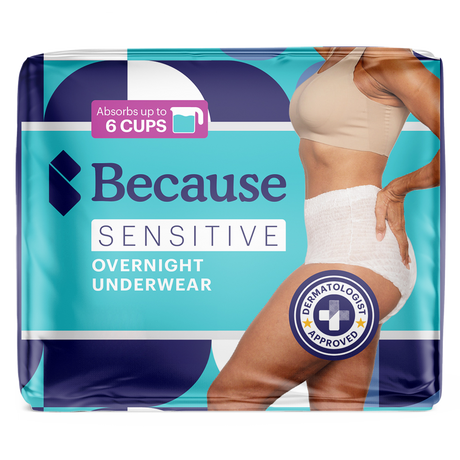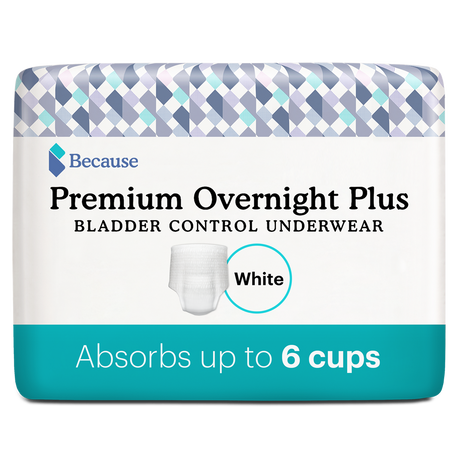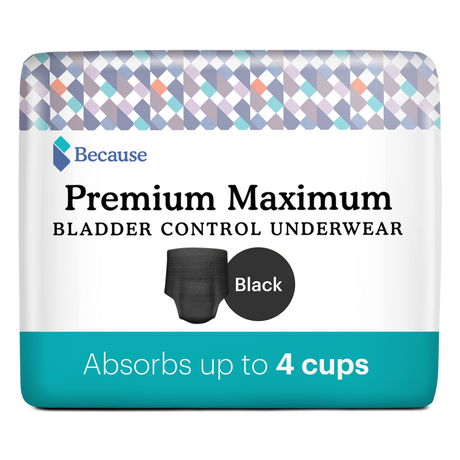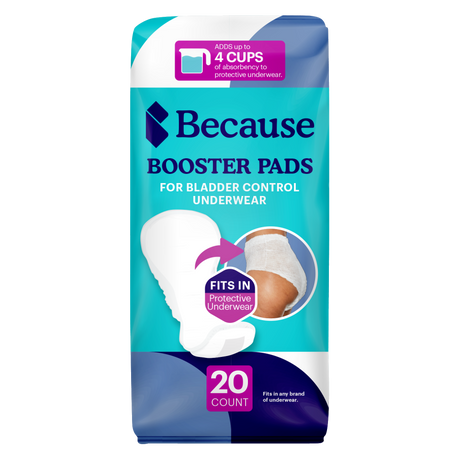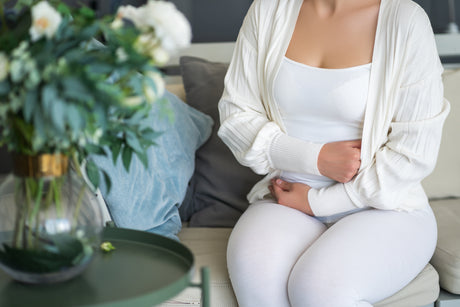Incontinence refers to the involuntary loss of urine, which can range from occasional leaks to complete loss of bladder control. It's a common condition that affects women of all ages, often stemming from factors such as pregnancy, childbirth, menopause, and pelvic floor muscle weakness.
Addressing common questions and concerns surrounding incontinence is vital for raising awareness, reducing stigma, and providing support to those affected. By openly discussing the causes, symptoms, treatment options, and lifestyle adjustments related to incontinence, women can feel empowered to seek help, improve their quality of life, and break free from the limitations often associated with this condition.
In this blog we will cover some of the most common questions and concerns women have around incontinence.
1. What is Incontinence in Women?
First, let’s shed light on what incontinence entails for women, from its definitions to its various types and prevalence.
Incontinence is defined as: medical condition characterized by the involuntary loss of control over bladder or bowel function, leading to the unintentional leakage of urine or feces. It can manifest in various forms and severity levels, impacting an individual's daily life and overall well-being. There are six different types of incontinence: stress, urge, overflow, mixed, functional, and reflex.
Stress, urge, and mixed incontinence, which is when a woman has symptoms of both stress and urge incontinence, are the most common types of incontinence in women. You’ll find the definitions of each type below.
Stress incontinence: a type of urinary incontinence characterized by the involuntary leakage of urine during physical activities or movements that apply pressure or stress on the bladder, such as coughing, sneezing, laughing, lifting heavy objects, or exercising.
Urge Incontinence (also referred to as overactive bladder or OAB): a type of urinary incontinence characterized by a sudden and intense urge to urinate, often accompanied by an involuntary loss of urine before reaching the toilet.
Mixed Incontinence: a combination of two or more types of urinary incontinence, typically stress and urge incontinence.
Functional Incontinence: the inability to control urination or defecation due to physical or cognitive impairments that hinder a person's ability to reach a restroom in time.
Reflex Incontinence: a type of urinary incontinence characterized by the involuntary loss of urine due to a neurological condition or spinal cord injury.
Overflow Incontinence: when the bladder is unable to empty completely, leading to frequent or continuous dribbling of urine.
Prevalence in women
In 2022, a comprehensive review of research was conducted to determine updated estimates of urinary incontinence prevalence among American women. This research included data from over 5000 women. The research showed that 61.8% had experienced urinary incontinence. This percentage, when applied to the population of the US, would amount to over 78 million women.
Of those who experienced incontinence, 37.5% had stress incontinence, 22% had urge incontinence, 31.3% had mixed incontinence, and 9.2% had uncategorized incontinence.
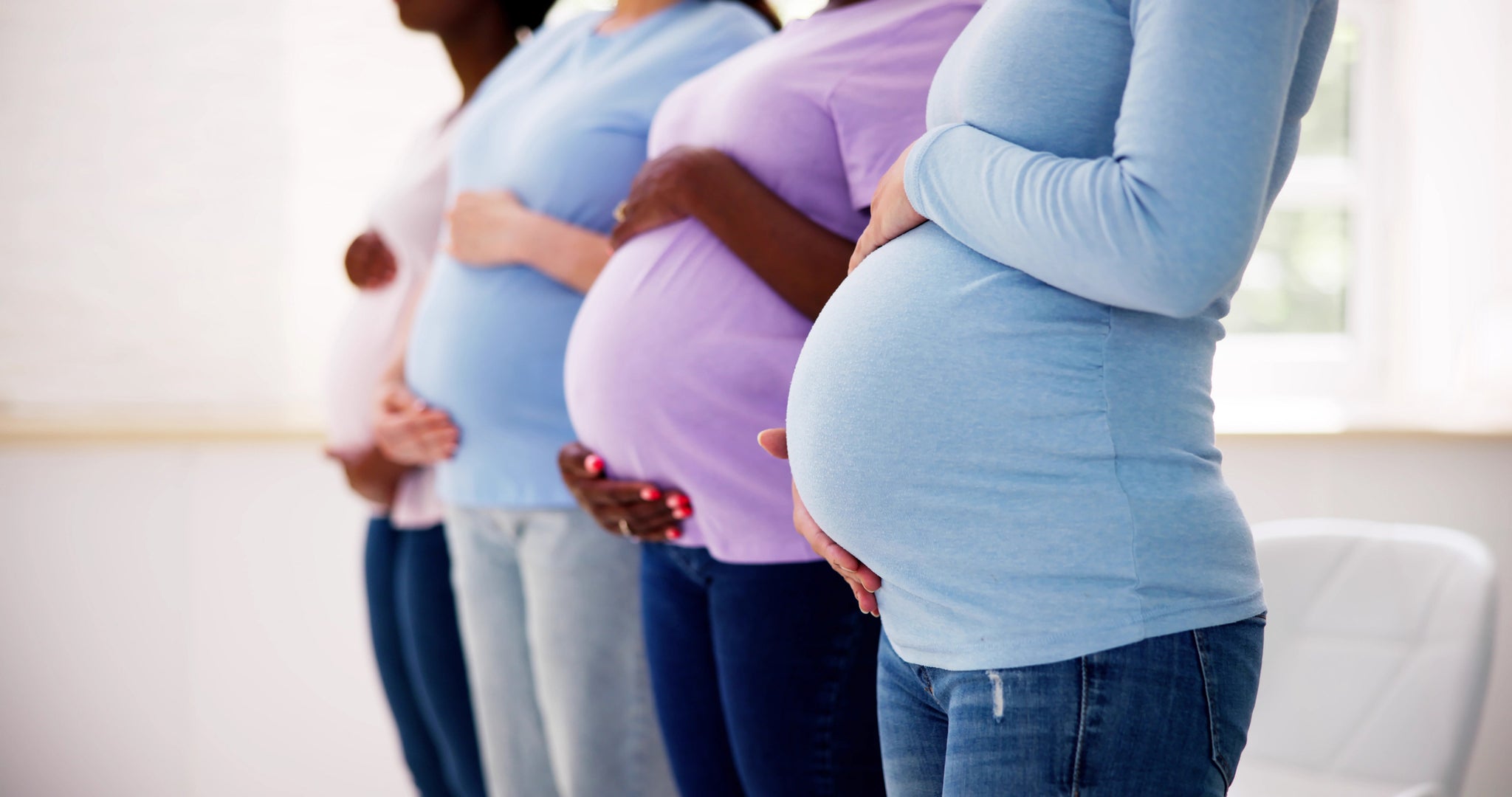
2. What Causes Incontinence in Women
In this section, we delve into the different causes behind incontinence in women. From the physiological changes of pregnancy and childbirth to the complexities of pelvic floor muscle weakness and neurological disorders, understanding these diverse causes is crucial for effective management and treatment of incontinence in women.
Pregnancy and childbirth
Pregnancy and childbirth significantly impact the pelvic floor muscles and surrounding tissues, leading to an increased risk of urinary incontinence in women. During pregnancy, hormonal changes and the growing uterus can weaken the pelvic floor, while the stress of labor and delivery can further stretch and damage these muscles.
Research indicates that up to 40% of women experience urinary incontinence during pregnancy, with rates increasing further postpartum. Additionally, a study published in the American Journal of Obstetrics and Gynecology found that the prevalence of urinary incontinence increases with the number of vaginal deliveries, highlighting the long-term effects of childbirth on bladder control. Understanding these physiological changes is essential for implementing preventive measures and targeted interventions to address incontinence in postpartum women effectively.
Menopause
Menopause often brings hormonal changes that can weaken the pelvic floor muscles and contribute to urinary incontinence in women. Research indicates that decreased estrogen levels during menopause can lead to alterations in bladder and urethral tissue, reducing their elasticity and causing urinary symptoms.
According to a study published in Women's Health (London, England) up to 40% of postmenopausal women experience urinary incontinence, underscoring the significant impact of hormonal transitions on bladder control. Understanding these hormonal influences is crucial for developing tailored management strategies to address incontinence in menopausal women effectively.
Neurological disorders
Neurological disorders can disrupt the intricate communication between the brain and bladder, leading to urinary incontinence. Conditions such as multiple sclerosis, Parkinson's disease, and spinal cord injuries can impair nerve function, affecting bladder sensation and control.
According to research published in 2020, up to 70% of Parkinson’s patients develop OAB, over 90% of patients with MS develop lower urinary tract dysfunction (LUTD), and 43%-87% of patients with peripheral neuropathy, common in diabetics, develop some form of LUTD, highlighting the significant impact of these conditions on bladder function and continence. Understanding the neurological mechanisms underlying incontinence is vital for implementing targeted interventions to manage symptoms and improve quality of life for those affected.
Other contributing factors
In addition to pregnancy, childbirth, menopause, and neurological disorders, several other factors can contribute to the development of urinary incontinence in women. These include obesity, chronic coughing (such as from smoking or lung conditions), certain medications (like diuretics or antidepressants), and anatomical abnormalities. Addressing these contributing factors alongside the primary causes can significantly improve management and treatment outcomes for individuals experiencing urinary incontinence.
3. What are Some Symptoms and Signs of Incontinence
In this section, we explore the array of symptoms and signs that characterize urinary incontinence in women. From subtle leakage during everyday activities to the distressing urgency and frequency of bathroom trips, understanding these symptoms is crucial for accurate diagnosis and targeted management of incontinence in women.
Leakage of urine
Leakage of urine, whether it occurs during physical activities or while at rest, serves as a clear indicator of urinary incontinence in women. The amount of liquid leaked can provide valuable insight into the severity of the condition; frequent small leaks may suggest stress incontinence, while larger or more continuous leaks could indicate overflow or urge incontinence.
Frequent urination
Frequent urination, where a person feels the need to urinate more often than usual, is a common symptom of urinary incontinence in women. While the frequency of urination can vary among individuals, most healthy adults typically urinate between 6 to 8 times a day, depending on factors such as fluid intake and activity level. However, incontinence-related frequent urination may involve significantly more bathroom trips, disrupting daily activities and indicating underlying bladder control issues.
Urinary urgency
Urinary urgency, characterized by a sudden and compelling need to urinate, is a hallmark symptom of urinary incontinence in women. Individuals experiencing urinary urgency may find it difficult to postpone bathroom trips, often leading to episodes of leakage if they cannot reach a restroom in time. This sensation of urgency can significantly impact daily life, causing distress and disrupting activities, highlighting the importance of timely diagnosis and management of incontinence symptoms.
Other associated symptoms
In addition to leakage, frequent urination, and urinary urgency, women experiencing urinary incontinence may also encounter other associated symptoms such as nocturia (waking up multiple times at night to urinate), urinary hesitancy (difficulty starting urination), and urinary tract infections (UTIs).
These symptoms can further complicate the management of incontinence and indicate underlying bladder or urinary tract issues that require attention. Recognizing and addressing these associated symptoms alongside primary incontinence symptoms is essential for comprehensive care and improved quality of life for affected individuals.
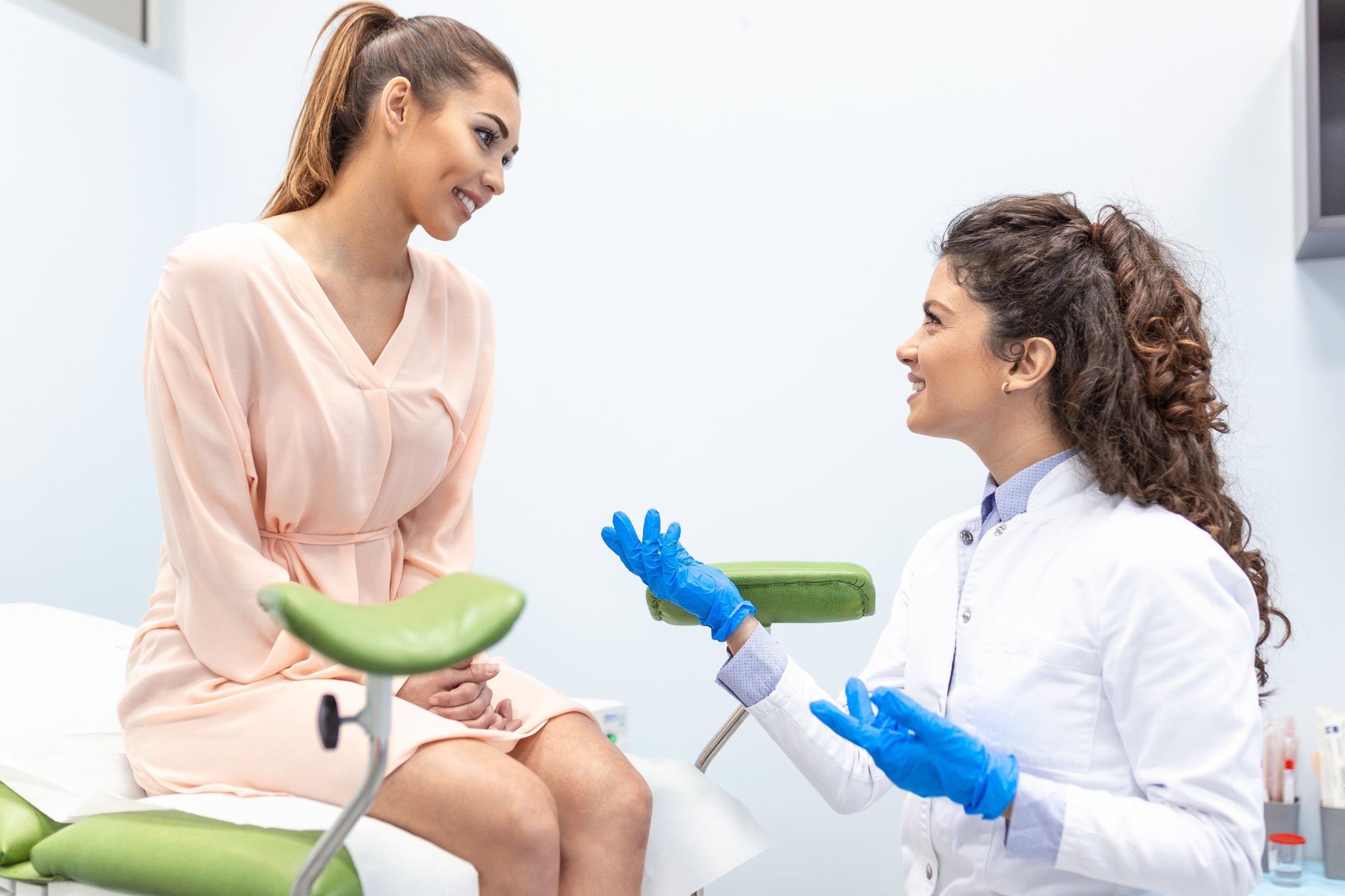
4. How is Incontinence Diagnosed?
In this section, we delve into the diagnostic process for urinary incontinence in women, exploring the various assessments and evaluations used by healthcare professionals to identify and understand the underlying causes and severity of the condition. From comprehensive medical history assessments to specialized diagnostic tests such as urinalysis and bladder diaries, understanding the diagnostic journey is crucial for accurate diagnosis and tailored treatment plans.
Medical history assessment
A medical history assessment is vital in diagnosing urinary incontinence as it provides valuable insights into the patient's overall health, lifestyle factors, and any underlying medical conditions that may contribute to the symptoms. Doctors typically inquire about the onset, frequency, and severity of urinary incontinence, as well as any associated symptoms such as pelvic pain or urinary tract infections. Additionally, they may explore relevant factors such as childbirth history, medications, and lifestyle habits to better understand the individualized factors contributing to the condition.
Physical examination
A physical examination is essential in diagnosing urinary incontinence as it allows healthcare professionals to assess the integrity of the pelvic floor muscles, vaginal walls, and surrounding structures. Through palpation and observation, doctors can identify signs of muscle weakness, pelvic organ prolapse, or other anatomical abnormalities that may contribute to incontinence symptoms. Additionally, a physical examination enables healthcare providers to rule out other potential causes of urinary symptoms and tailor treatment plans to address the specific needs of each patient.
Diagnostic tests (urinalysis, bladder diary, etc.)
Diagnostic tests for incontinence include urinalysis to detect urinary tract infections, bladder diaries to track voiding patterns, urodynamic studies to evaluate bladder function and pressure, and cystoscopy to visualize the inside of the bladder for abnormalities. These tests help healthcare professionals pinpoint the underlying causes of incontinence and tailor treatment plans accordingly.
- Urinalysis: a diagnostic test performed on a urine sample to evaluate various aspects of kidney and urinary tract health. It typically involves examining the urine for the presence of substances such as blood, protein, glucose, and bacteria, as well as assessing its color, clarity, and specific gravity.
- Cystoscopy: medical procedure used to examine the inside of the bladder and urethra using a thin, flexible instrument called a cystoscope.
- Bladder Diaries: records kept by individuals to track their urinary habits and patterns over a certain period, typically spanning several days to a week
- Urodynamic Studies: a set of diagnostic tests used to evaluate the function and efficiency of the lower urinary tract, including the bladder, urethra, and associated sphincters. These tests assess various aspects of urinary function, such as bladder pressure, capacity, and coordination of muscle contractions during filling and emptying.
Referral to specialists
A referral to a specialist may be necessary for the diagnosis of urinary incontinence when the condition requires further evaluation or expertise beyond the scope of primary care. Specialists such as urologists, urogynecologists, or pelvic floor physiotherapists possess specialized training and diagnostic tools to thoroughly assess and diagnose complex cases of incontinence. Their expertise ensures that patients receive comprehensive care tailored to their specific needs, leading to more accurate diagnoses and effective treatment plans.
5. What are the Treatment Options for Incontinence in Women?
In this section, we explore a range of treatment options available for urinary incontinence in women, addressing both conservative and medical interventions aimed at improving bladder control and quality of life. From lifestyle modifications and pelvic floor exercises to medications and surgical procedures, understanding these diverse treatment modalities empowers individuals to make informed decisions about managing their incontinence effectively.
Lifestyle changes (diet, hydration, weight management)
Lifestyle changes can play a significant role in managing urinary incontinence, including:
- Maintaining a healthy weight
- Practicing pelvic floor exercises
- Managing fluid intake
- Avoiding bladder irritants
- Establishing a consistent toileting schedule
and more. These simple yet impactful lifestyle adjustments can complement other treatment modalities and contribute to improved bladder function and continence.
Medications
Medications for incontinence aim to improve bladder function and control by targeting specific underlying causes of urinary leakage. For example, anticholinergic medications work by relaxing bladder muscles to reduce urinary urgency and frequency, while mirabegron helps increase bladder capacity and decrease urgency in individuals with overactive bladder. These medications may be prescribed based on the type and severity of incontinence, often as part of a comprehensive treatment plan alongside other interventions such as lifestyle modifications or pelvic floor exercises.
Surgical interventions
Surgical interventions for incontinence are typically reserved for cases that do not respond to conservative treatments or medications. Procedures such as sling surgery or bladder neck suspension may be performed to provide support to the urethra and bladder, reducing urinary leakage. Additionally, newer techniques like sacral neuromodulation, posterior tibial nerve stimulation, or botulinum toxin injections may be considered for individuals with refractory urge incontinence, offering alternative options for those seeking long-term management of their symptoms.
Other therapies
Other therapies for incontinence, such as biofeedback and electrical stimulation, focus on strengthening pelvic floor muscles and improving bladder control. Biofeedback involves using sensors to provide feedback on muscle activity, helping individuals learn to better control their pelvic floor muscles through exercises.
Electrical stimulation, on the other hand, uses mild electrical currents to stimulate and strengthen pelvic floor muscles, aiding in the management of both stress and urge incontinence.
Additionally, bladder supplements containing substances like cranberry extract or pumpkin seed oil may be used to support urinary tract health and reduce symptoms of incontinence, although the supplement market is unregulated so be sure to do your research into the ingredients and manufacturing of the brand. Finally, all supplements should be discussed with a healthcare provider.

6. What are Some Prevention Strategies for Incontinence?
In this section, we explore proactive approaches and lifestyle strategies aimed at preventing the onset or progression of urinary incontinence in women. From adopting healthy habits to practicing pelvic floor exercises, understanding these prevention strategies empowers individuals to take control of their bladder health and reduce their risk of developing incontinence. By implementing these preventive measures early on, individuals can maintain bladder function, preserve continence, and improve overall quality of life.
Maintaining a healthy lifestyle
Maintaining a healthy lifestyle can play a crucial role in preventing urinary incontinence by supporting overall bladder and pelvic health. Factors such as maintaining a healthy weight, staying physically active, and consuming a balanced diet rich in fiber can help prevent obesity-related pressure on the bladder and reduce the risk of urinary leakage.
Additionally, avoiding bladder irritants such as caffeine, alcohol, and spicy foods, and practicing good hydration habits can promote optimal bladder function and minimize the risk of incontinence. Making these lifestyle choices can contribute to better bladder control and reduce the likelihood of developing urinary incontinence over time.
Pelvic floor exercises
Pelvic floor exercises, which include Kegel exercises, are effective in preventing urinary incontinence by strengthening the muscles that support the bladder and urethra. Regularly performing these exercises can improve pelvic floor muscle tone and endurance, helping to enhance bladder control and reduce the risk of leakage. Incorporating pelvic floor exercises into daily routines, particularly during and after pregnancy, can significantly contribute to the prevention of urinary incontinence in women.
Proper hydration
Proper hydration is essential for preventing urinary incontinence as it helps maintain optimal bladder function and urinary tract health. Drinking an adequate amount of water throughout the day can prevent concentrated urine, which can irritate the bladder and contribute to urgency and leakage. By staying well-hydrated, individuals can support bladder health, reduce the risk of urinary tract infections, and promote overall urinary continence.
Regular bathroom habits
Establishing regular bathroom habits is important for preventing urinary incontinence by promoting healthy bladder function and habits. Encouraging consistent toileting schedules, such as emptying the bladder at set intervals throughout the day, can help train the bladder to hold urine more effectively and reduce the frequency of urgency and leakage episodes. Additionally, avoiding delaying urination when feeling the urge to go can prevent overdistension of the bladder and minimize the risk of accidents.
7. How do I Live Day-to-Day with Incontinence?
In this section, we provide practical tips, strategies, and support for individuals navigating the challenges of living with urinary incontinence on a daily basis. From coping mechanisms to product recommendations, this resource aims to empower those affected by incontinence to manage their condition effectively and maintain a fulfilling lifestyle despite its challenges.
Support groups and resources
Support groups provide invaluable emotional support, camaraderie, and practical advice for individuals living with urinary incontinence, fostering a sense of community and understanding among peers facing similar challenges. These groups offer a safe space to share experiences, discuss coping strategies, and access resources for managing incontinence effectively. To find support groups, individuals can inquire with healthcare providers, search online forums or social media platforms, or contact organizations dedicated to bladder health or incontinence awareness.
To join our Women’s Incontinence Support Group click here!
Tips for managing daily life with incontinence
- Stay prepared: Carry extra absorbent pads or underwear, as well as a change of clothes, to manage unexpected leaks or accidents discreetly while away from home.
- Monitor fluid intake: Keep track of fluid intake and avoid excessive consumption of bladder irritants such as caffeine, alcohol, and acidic or spicy foods, which can exacerbate urinary urgency and leakage.
- Identify bathrooms ahead of time: Identifying bathrooms ahead of time at events or on long road trips can save you from an unexpected accident. Instead of hoping a rest stop is just around the next exit or readily available, make a plan ahead of time.
- Avoid bladder irritants: Avoid bladder irritants in daily life, but especially when you are outside of the home. Irritants like alcohol and caffeine can contribute to feelings of urgency and increase the likelihood of a leak.
- Wear dark clothing: Dark clothing will hide any leaks better than light colored clothing in a pinch.
8. Can Incontinence be Cured?
In many cases, urinary incontinence can be effectively managed and improved, but a complete cure may not always be possible, especially for certain underlying causes such as neurological disorders or anatomical abnormalities. However, with the right combination of lifestyle modifications, pelvic floor exercises, medications, and possibly surgical interventions, many individuals experience significant improvement in their symptoms and quality of life. It's important to consult with healthcare professionals to determine the most suitable treatment approach based on the specific type and severity of incontinence. While a complete cure may not always be achievable, proactive management strategies can lead to substantial symptom relief and better bladder control over time.

9. Can I Still Exercise if I Have Incontinence?
Yes, it's possible to continue exercising with incontinence, but it's essential to choose activities that minimize the risk of urinary leakage and discomfort. Opt for low-impact exercises such as walking, swimming, or cycling, and consider incorporating pelvic floor exercises into your routine to strengthen bladder control muscles. Additionally, wearing absorbent pads or specialized incontinence products can provide added protection and confidence during physical activity.

10. Will Incontinence Affect My Sex Life?
Incontinence can impact your sex life to some extent, but it's essential to communicate openly with your partner and explore intimacy in ways that feel comfortable and enjoyable for both of you. Experimenting with different positions, using protective measures like towels or pads, and emptying your bladder before intercourse can help minimize any potential disruptions caused by urinary leakage. Seeking guidance from healthcare professionals or sex therapists can also provide valuable support and strategies for maintaining intimacy and pleasure despite the challenges of incontinence.
In conclusion, urinary incontinence is a common yet often misunderstood condition that affects millions of women worldwide. By addressing common questions and concerns surrounding incontinence and exploring its various causes, symptoms, and treatment options, we aim to empower individuals to take control of their bladder health and improve their quality of life. From lifestyle modifications and pelvic floor exercises to medical interventions and supportive resources, there are numerous strategies available to help manage incontinence effectively and maintain a fulfilling lifestyle. Remember, you're not alone in your journey, and seeking support from healthcare professionals and peers can make a significant difference in navigating the challenges of living with incontinence.
Sources:
(2023, Aug.) Pregnancy and Bladder Control. Cleveland Clinic. https://my.clevelandclinic.org/health/diseases/16094-pregnancy-and-bladder-control
McKinnie, V., Swift, S., Wang, W., Woodman, P., O’Boyle, A., Khan, M., Valley, M., Bland, D., Schaffer, J. (2005, Aug.) The effect of pregnancy and mode of delivery on the prevalence of urinary and fecal incontinence. TRANSACTIONS OF THE 67TH ANNUAL MEETING OF THE SOUTH ATLANTIC ASSOCIATION OF OBSTETRICIANS AND GYNECOLOGISTS, Volume 193, Issue 2, P512-517. https://www.ajog.org/article/S0002-9378(05)00492-8/abstract
McMillan, I., Hill, L., McCarthy, R., Haas-Eckersley, R., Russell, M., Wood, J., Doxford-Hook, L., Fu, Y., McGowan, L., & Iles-Smith, H. (2023). Urinary incontinence in women 55 years and older: A scoping review to understand prevalence, incidence, and mortality of urinary incontinence during secondary care admission. Women's health (London, England), 19, 17455057231179061. https://doi.org/10.1177/17455057231179061
Moussa, M., Papatsoris, A., Chakra, M. A., Fares, Y., & Dellis, A. (2020). Lower urinary tract dysfunction in common neurological diseases. Turkish journal of urology, 46(Supp. 1), S70–S78. https://doi.org/10.5152/tud.2020.20092
